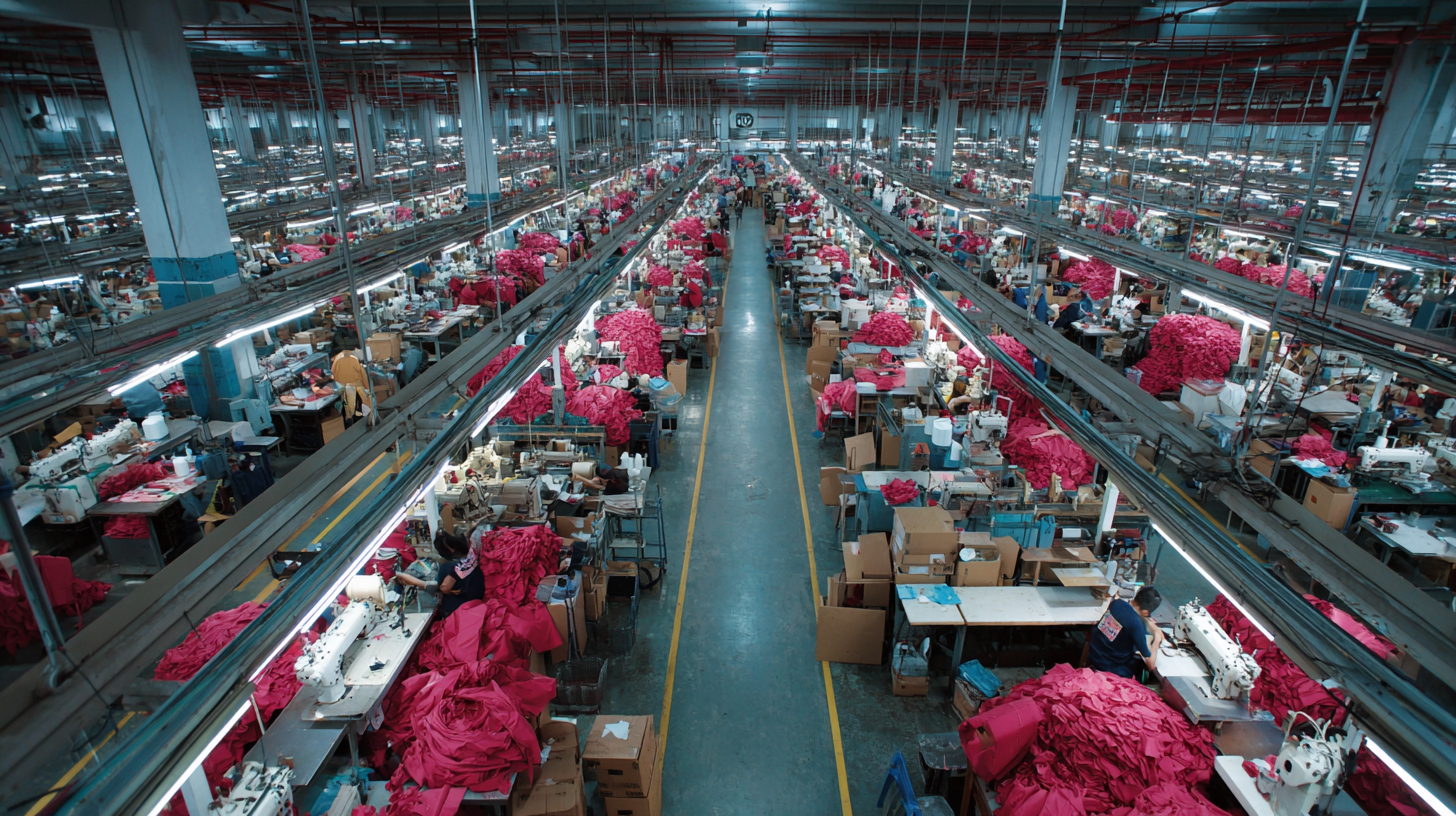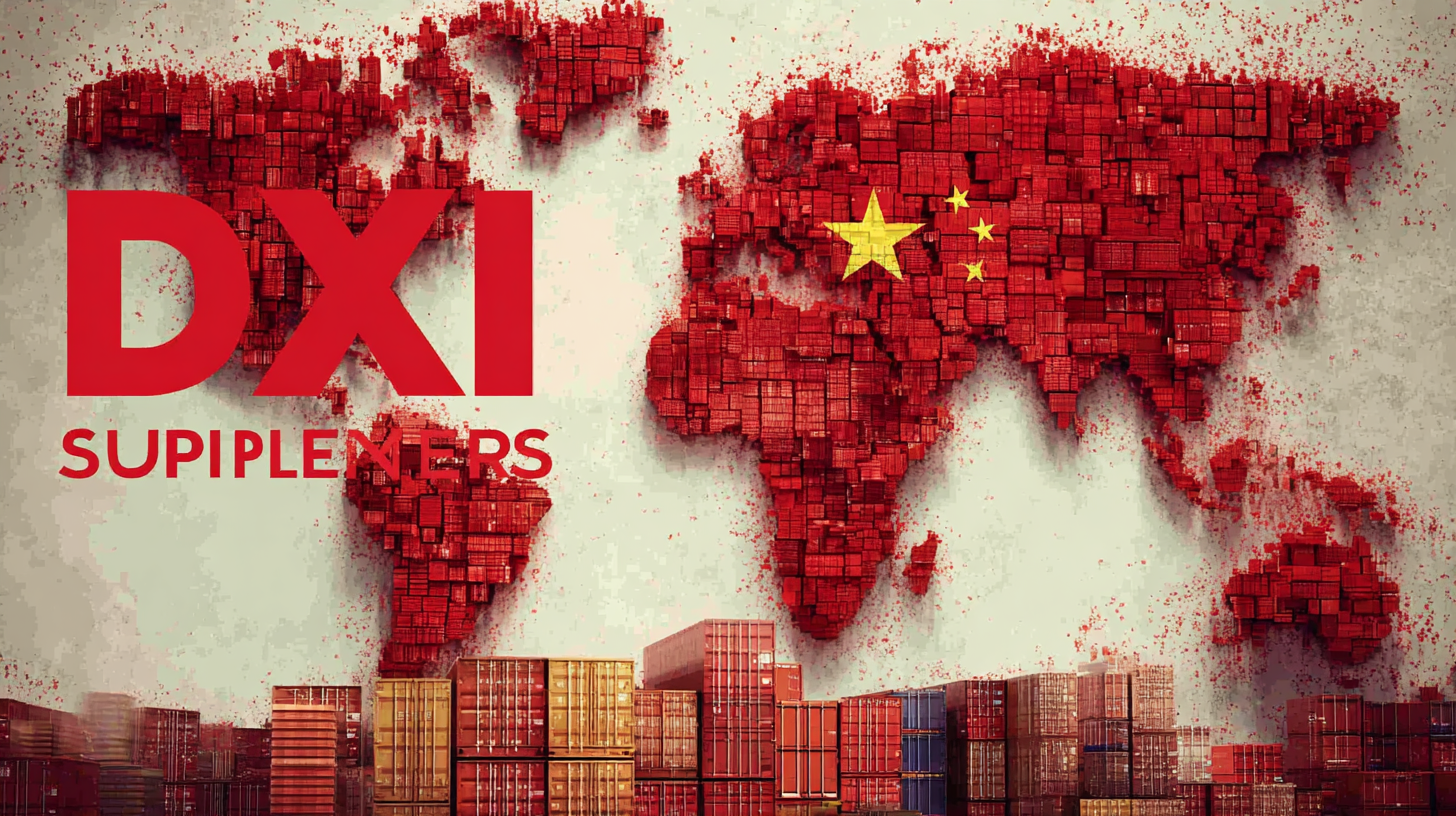
From China to the World: How Top Suppliers Are Winning Global Markets with Quality Excellence
In today's increasingly interconnected global economy, the role of suppliers has never been more critical, particularly those from China who are seizing opportunities to dominate international markets through unparalleled quality excellence. According to a recent report by McKinsey, over 60% of global companies identify supplier quality as a key determinant of their competitive edge, highlighting the essential role that reliable suppliers play in ensuring product integrity and customer satisfaction. Furthermore, the World Bank indicates that the global supply chain is projected to grow by 5% annually, significantly impacting sectors as diverse as electronics, textiles, and manufacturing. This ultimate guide delves into the strategies employed by top Chinese suppliers to elevate their quality standards and leverage innovative practices, enabling them to not only meet but exceed international market demands. Through a comprehensive analysis of case studies and industry benchmarks, we will uncover how these suppliers are setting themselves apart on the world stage.

Understanding Quality Excellence: Key Metrics and Industry Standards
Quality excellence is paramount for suppliers aiming to penetrate global markets, particularly for those in manufacturing sectors. According to a report by the International Organization for Standardization (ISO), organizations that implement quality management systems can improve their operational performance by up to 20%. In industries such as electronics and automotive, adherence to established industry standards like ISO 9001 and IATF 16949 not only enhances product quality but also builds trust among international buyers. Suppliers who align their processes with these standards often experience lower defect rates and increased customer satisfaction, essential metrics for maintaining a competitive edge.

Furthermore, the role of key performance indicators (KPIs) in assessing quality excellence cannot be overstated. A study from McKinsey shows that companies leveraging real-time quality data can reduce production costs by an average of 25%. Metrics such as First Pass Yield (FPY) and Overall Equipment Effectiveness (OEE) help suppliers monitor and improve their processes continuously. By focusing on these metrics, suppliers can not only guarantee high-quality outputs but also foster innovation within their operations, which is critical for sustaining growth in diverse global markets.
The Role of Technology in Enhancing Supply Chain Quality
In today's highly competitive global markets, the role of technology in enhancing supply chain quality cannot be overstated. As companies prioritize quality excellence, the integration of advanced technologies has emerged as a cornerstone for success. According to a report by McKinsey, companies that leverage digital technologies in their supply chains can achieve up to a 40% improvement in operational efficiency. These technologies not only streamline processes but also enhance the visibility and traceability of products throughout the supply chain, reducing defects and increasing customer satisfaction.
Furthermore, the use of artificial intelligence and machine learning is revolutionizing quality control measures. Industry data indicates that organizations implementing AI-driven analytics can reduce quality-related costs by as much as 30%. This is particularly relevant in sectors such as electronics and automotive, where precision and reliability are paramount. By harnessing these technological advancements, top suppliers are not only meeting but exceeding global quality standards, thereby securing their positions in international markets and driving sustained growth.
Case Studies: Chinese Suppliers Leading with Quality in Global Markets
In recent years, several Chinese suppliers have emerged as leaders in global markets, setting new benchmarks for quality excellence. These companies have focused on stringent quality control processes and continuous improvement, allowing them to compete effectively on an international scale. For instance, in the electronics sector, Chinese manufacturers have adopted advanced technologies and practices, ensuring that their products not only meet but exceed international quality standards, which has significantly boosted their reputation and market presence.
**Tip:** To achieve quality excellence, suppliers should invest in staff training and development. Well-trained employees are more adept at identifying potential issues early in the production process, which can save time and costs in the long run.
Another key aspect of success is collaboration with international partners. By understanding the unique needs and expectations of different markets, top Chinese suppliers have been able to tailor their offerings accordingly. This flexibility not only enhances customer satisfaction but also strengthens long-term partnerships and brand loyalty.
**Tip:** Regularly seek customer feedback and adapt your processes based on their suggestions. This proactive approach not only helps in maintaining quality but also fosters a culture of trust and collaboration between suppliers and their clients.
From China to the World: How Top Suppliers Are Winning Global Markets with Quality Excellence
| Supplier Type | Country | Industry | Quality Certification | Market Share (%) | Customer Satisfaction Score |
|---|---|---|---|---|---|
| Electronics | China | Consumer Electronics | ISO 9001 | 25 | 89% |
| Automotive | China | Auto Parts | IATF 16949 | 30 | 92% |
| Textiles | China | Clothing | OEKO-TEX | 20 | 85% |
| Consumer Goods | China | Home Appliances | ISO 14001 | 15 | 90% |
| Pharmaceuticals | China | Health Products | GMP | 10 | 95% |
Consumer Perception and the Impact of Quality on Brand Loyalty
In today's competitive landscape, consumer perception plays a pivotal role in shaping brand loyalty, particularly for suppliers transitioning from China to global markets. According to a report by McKinsey & Company, 70% of purchasing decisions are influenced by a consumer's perception of quality, underscoring the necessity for top suppliers to prioritize quality excellence. Brands that are viewed as high-quality not only attract new customers but also cultivate a loyal base. Research indicates that 72% of consumers are more likely to repurchase from brands known for delivering superior products, illustrating the direct correlation between quality and customer retention.
Beyond merely attracting consumers, quality excellence also enhances brand reputation. A study by Nielsen revealed that 59% of consumers would rather pay more for products perceived as high-quality, emphasizing the financial benefits associated with maintaining high standards. Furthermore, the increasing access to information means that consumers can easily share their opinions about product quality online, making it essential for suppliers to manage and enhance their quality perceptions. In a global economy where brand loyalty is fragile, suppliers shifting from China must leverage quality excellence as a strategic advantage to secure a lasting footprint in international markets.
Impact of Quality on Brand Loyalty
Future Trends: Innovations Driving Quality in Global Supply Chains
In today's competitive landscape, innovations are at the forefront of driving quality in global supply chains. As companies strive to meet international standards, the integration of advanced technologies such as artificial intelligence and IoT is becoming crucial. These innovations enable suppliers to monitor quality in real-time, enhancing efficiency and minimizing defects. By leveraging data analytics, businesses can gain insights into their supply chain processes, allowing for swift adjustments that uphold quality excellence.
Tip: Invest in robust quality management systems that incorporate automation and predictive analytics. This helps to proactively identify potential quality issues before they escalate, saving time and resources while ensuring customer satisfaction.
Moreover, sustainable practices are increasingly influencing quality perceptions in global markets. Suppliers who prioritize eco-friendly materials and processes not only contribute to environmental goals but also appeal to conscious consumers. Innovations in sustainable manufacturing techniques can significantly boost brand reputation and lead to a competitive edge in global markets.
Tip: Engage in continuous training for your workforce on the importance of sustainability in quality management. Empowering employees with knowledge can drive a culture of quality and innovation, ultimately benefiting the entire supply chain.

